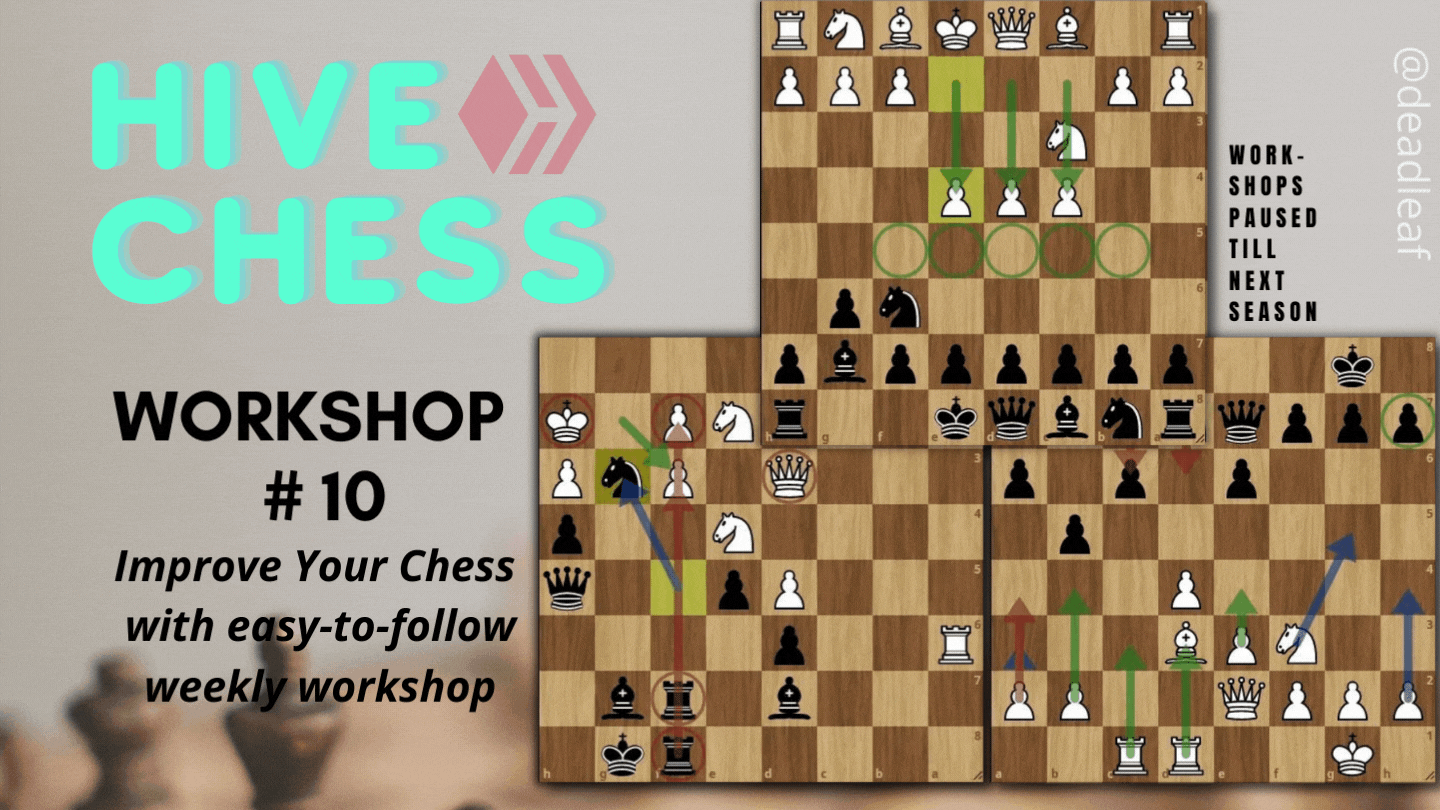
In this week's workshop, we're going to do:
- King's Indian Defense: Normal Variation -- a dynamic opening for black to fight for win against 1.d4
- Decisive pawn breaks in Middlegame
- Queen Endgames (with minor piece)
Announcement:
Workshops are paused till next season. Enjoy in the meantime!
1.Opening:
(check lichess study links below diagrams for example games)

|
| King's Indian Defense: Normal Variation lichess study link |

|
| Ding, Liren - Carlsen, Magnus lichess study link |

|
| Carlsen, M. - Grischuk, A. lichess study link |

|
| Caruana, Fabiano - Radjabov, Teimour
lichess study link |

2.Middle-game:

|
| White to play If you were playing this position, what would be your evaluation of this position. How would you press black? lichess study link |

|
| White to play If you were playing this position, what would be your evaluation. How would you try to gain advantage? lichess study link |

3.End-game:

|
| White to Play If you were playing this position, what would be your evaluation. How not to blunder in this position? lichess study link |

|
| White to play If you were playing this position, what would be your evaluation. Is this a draw or can white win with an extra knight? lichess study link |

|
| White to play If you were playing this position, what would be your evaluation. Is this position winnable for white? lichess study link |

These ideas are must have patterns in your mind for understanding and ultimately playing better chess.
Solving the positions:
Try to solve these positions by
- Evaluating the position, finding who's better i.e white or black.
- Studying the positions one by one, without rushing.
- Calculating different variations no less than 5 minutes each position, for better understanding.
| Every Friday at 20 GMT hosted by @stayoutoftherz | Every Saturday at 20 GMT hosted by @schamangerbert | Every Sunday at 19 GMT hosted by @chessbrotherspro |

Credits:
|
Note:
|
| Thanks for Your Attention! -Regards |

|
|---|
The positions are tough, especially the endings. I'm going to comment on this one only atm:
My evaluation is that White is playing against the clock in the sense that their chances for an advantage are about to evaporate. In these structures Black is always seeking for a liberating move, which in this case can be either ...c5 or ...e5. Black is ready to play ...c5 and they usually equalize with it easily. So, white should pick up moves to prevent that idea or to contain its consequences. We would like to play 1. Nd2 and then Ne4, but it's too slow. The move 1. b4 could be a interesting gambit to deflect the queen and use the g5 square to maneuver the knight around and attack as a well, but Black is too solid. I don't think it is worth it. Also, 1. Be4 is another nice idea, but fails to ...f5, followed by ...c5 I think. The best I can think of is 1. a4 to bother the pawns on the queenside, discouraging ...c5. A possible line could be:
This is a great content. Congrats.
You would quickly give checkmate to me. Haha. 😂
!LOLZ.
lolztoken.com
Make me one with everything.
Credit: reddit
@eniolw, I sent you an $LOLZ on behalf of @xplosive
Use the !LOL or !LOLZ command to share a joke and an $LOLZ. (1/4)
LOL! Thanks for passing by.
Congratulations!
✅ Good job. Your post has been appreciated and has received support from CHESS BROTHERS ♔ 💪
♟ We invite you to use our hashtag #chessbrothers and learn more about us.
♟♟ You can also reach us on our Discord server and promote your posts there.
♟♟♟ Consider joining our curation trail so we work as a team and you get rewards automatically.
♞♟ Check out our @chessbrotherspro account to learn about the curation process carried out daily by our team.
Kindly
The CHESS BROTHERS team
Excelent
Yay! 🤗
Your content has been boosted with Ecency Points, by @deadleaf.
Use Ecency daily to boost your growth on platform!
Support Ecency
Vote for new Proposal
Delegate HP and earn more
Congratulations @deadleaf! You have completed the following achievement on the Hive blockchain and have been rewarded with new badge(s):
Your next target is to reach 900 upvotes.
You can view your badges on your board and compare yourself to others in the Ranking
If you no longer want to receive notifications, reply to this comment with the word
STOPCheck out the last post from @hivebuzz: